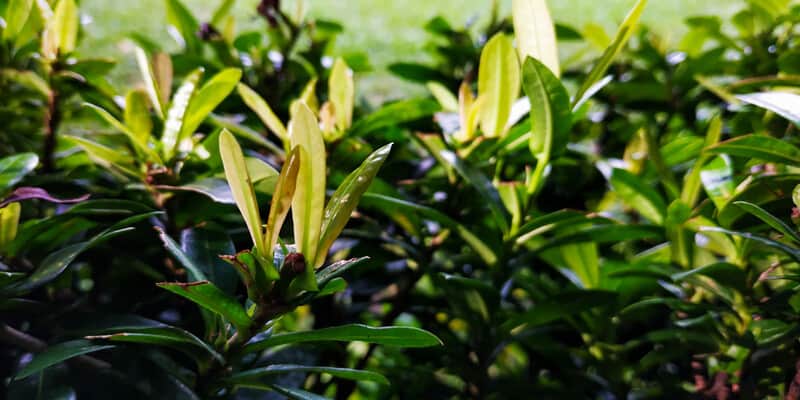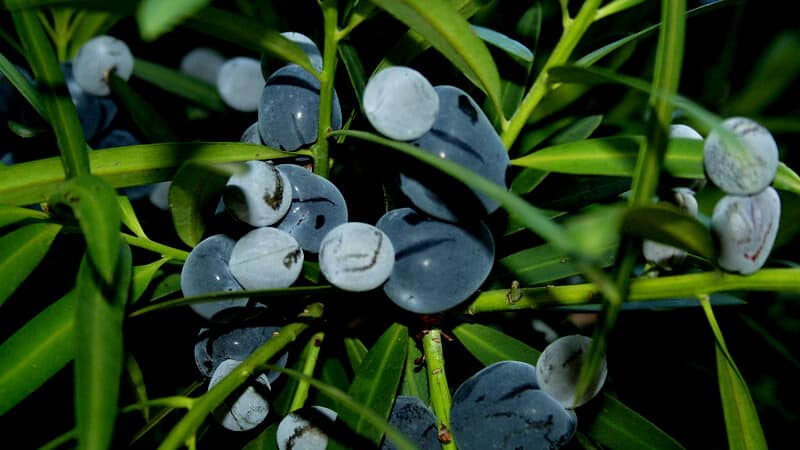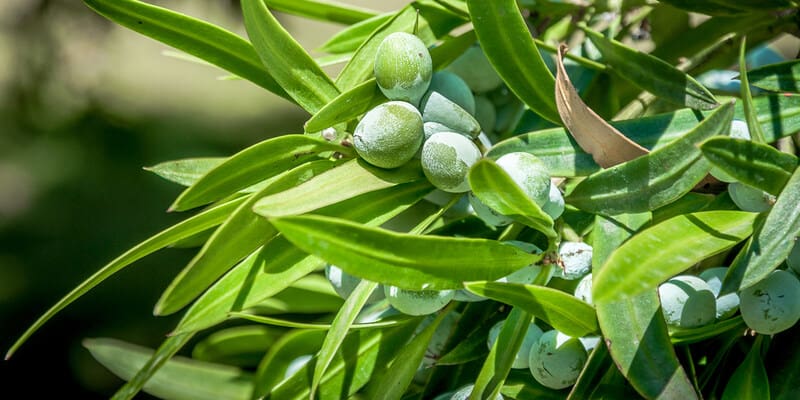If you’re looking to grow native plants, one of the best bush foods is the Illawarra Plum (podocarpus elatus). The plum pine, as it’s also called, produces pulpy fruits with a purple-black colour in autumn. The fruits have a grape-like texture, and can be eaten raw or made into jams and jellies. Make sure you’ve got both male and female trees, though – you won’t get any fruit otherwise!
Growing an Illawarra Plum is fairly straightforward. It prefers warm climates, mostly subtropical or tropical, but can grow in warm temperate. Plant your Illawarra plum in moist and well-drained soil, positioned in full sun to partial shade. Water your plum pine regularly, especially during the summer, although the tree is fairly drought tolerant when matured. The Illawarra Plum is also salt tolerant, so it’s great for coastal gardens, too.
Don’t beat around the bush (get it?). If you want to grow an Illawarra Plum tree at home, here’s how to plant one – and some cooking tips, too!
About The Illawarra Plum
The Illawarra Plum (podocarpus elatus) is actually a common rainforest species endemic to the east coast of Australia. It’s one of many Australian native trees, and is considered a bush food. It’s also a slow-growing tree, especially in the first 1-2 years. It’ll take about 8-10 years for a plum pine to reach its full height of 8-12m.
Illawarra Plums are not actually plums, but conifers. These rainforest trees, however, do not produce any cones. They instead produce single seeds attached to modified stalks. The leaves are dark green, and the tree produces clusters of small green-white flowers in summer.
Plum pine fruits are edible and may be eaten raw or made into fruit compotes. The trees produce fruit after about 3-5 years, between March and July. The fruits come in two parts – a hard, inedible seed and the purple-black berry.
Illawarra Plums are dioecious species, which means you need one each of male and female plants if you want them to be productive. For the best chances, plant several trees in one area – you can use them as hedges or screen plants, so long as you prune regularly.
(If you need an expert hand to help maintain your plum pine – and other plants – get a garden care service to do the job!)
The Illawarra Plum is also known by its indigenous names, Daalgaal and Goongum.
Illawarra Plum Growing Conditions
Soil
The Illawarra plum will tolerate most soil types, so long as the ground is free-draining. Still, it prefers moist, non-alkaline soil to grow. The important part is the drainage – the plum pine might like moist earth, but it won’t tolerate wet feet!
Light
These rainforest trees grow best in full sun, but will grow in part shade. If potted, place it near a window or other opening where it gets plenty of sunlight.
Climate
The plum pine grows best in tropical and subtropical climates, but will still thrive in a warm temperate climate. It’s also tolerant of salt spray, which makes it a good tree to plant along the east coast.
How To Grow An Illawarra Plum
Illawarra Plum pine trees can be grown from seeds, but are easier to propagate from cuttings.
Plum pine propagation
Sow seeds in trays containing seed-raising mix. Then position the trays somewhere warm and sunny, and mist regularly to keep soil moist. Once the seeds have germinated and the seedlings have established themselves, you can transfer them to pots.
For cuttings, these are best taken in winter. Cut stems 5-10cm long, and make sure to include plenty of leaf nodes. Strip the bottommost leaves and dip the end in a rooting hormone. Insert your cuttings in a container with a propagating mix. Place the container somewhere warm and sunny, and mist regularly to keep soil moist.
Growing plum pine in the garden
Pick somewhere sunny with well-drained soil (tip: consider a raised garden bed!). You can prep the soil beforehand with organic mulch or compost. Dig a hole twice as wide and just as deep as the root ball.
Remove the plant from its container, being careful with the roots. Tease the roots to spread them out if necessary.
Position the plant in the hole and backfill, gently firming down the soil. Water well to help the soil settle. You can apply a layer of organic mulch around the plant (avoid crowding the stem) to help conserve moisture.
Can you grow Illawarra Plum in a pot?
Yes – just make sure to prune regularly. The Illawarra plum will be a fairly tall potted plant, though, and will need quite a large pot to hold it.
Illawarra Plum Care
Water regularly to keep soil moist, but take care not to overwater. Illawarra Plums are fairly drought tolerant when mature, but still prefer a regular drink, especially in the hotter months.
Fertiliser isn’t necessary, but you can feed your plum pine with an organic fertiliser in late winter and summer. Illawarra Plum isn’t a Proteid plant, so there’s no need to use a low-phosphorus fertiliser, but you can use a specialised native plant fertiliser as a precaution.
For pruning, it depends on how you want your plum pine to grow. As a tree, there’s no need to prune – just let it go! But if you’re using plum pines as hedges or screens, tip prune them when young, then prune annually to maintain the size and shape.
Cooking With Illawarra Plum
The most important thing to remember when cooking with Illawarra plum is to use stainless steel utensils instead of aluminium or wood. This prevents your food from turning bitter.
The Illawarra Plum is one of the best Australian native food plants, especially in New South Wales. Its pulpy fruits have a grape-like texture and a sweetish, mild pine flavour. Plum pine fruits are often used in fruit compotes, jams, and other preserves. They’re also great for pastries and other desserts. If cooking in a sauce or marinade, the flavour of the berries complements garlic and chili particularly well.




